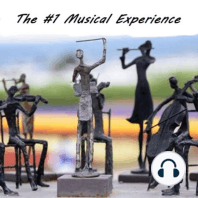4 min listen
Tchaikovsky 1812 Overture, Op. 49
ratings:
Length:
17 minutes
Released:
Jan 26, 2021
Format:
Podcast episode
Description
Why We Should Expose Our Kids To Classical Music https://ourtownlive.net.The Year 1812 (festival overture in E♭ major, Op. 49), also known as 1812 Overture, is an orchestral work by Pyotr Ilyich Tchaikovsky commemorating the unsuccessful French invasion into Russia, and the subsequent devastating withdrawal of Napoleon's Grande Armée, an event that marked 1812 as the major turning point of the Napoleonic Wars. The work is best known for the sequence of cannon fire, which is sometimes performed, especially at outside festivals, using live cannons. When performed indoors, orchestras may use computer generated cannon sounds or huge barrel drums. Although the composition has no historical connection with the America-Britain War of 1812, it is often performed in the US alongside other patriotic music. The overture debuted in the Cathedral of Christ the Saviour in Moscow on August 20, 1882. Get bonus content on Patreon Hosted on Acast. See acast.com/privacy for more information.
Released:
Jan 26, 2021
Format:
Podcast episode
Titles in the series (100)
Bach The Well Tempered Clavier, Book I, BWV 846-869 - Prelude in Fugue No.1 in C major: Why We Should Expose Our Kids To Classical Music https://ourtownlive.net #herbw79The Well-Tempered Clavier (Das Wohltemperierte Klavier), BWV 846–893, is a collection of solo keyboard music composed by Johann Sebastian Bach. He first gave the title... by The #1 Musical Experience
